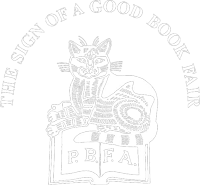
First issue : One of 1500 copies
Jones, David ~ In Parenthesis
First UK Printing : Faber and Faber Ltd, London: 1937
First UK Printing : Faber and Faber Ltd, London: 1937. 8vo., camel-coloured boards with painted green label ruled in gilt to spine; publisher’s name in green to foot; upper edge top-stained grey; together in the unclipped publisher’s wrapper (10s. 6d. net), with Faber Library list to the lower panel; frontis illustration by Jones; black and white facsimile map between p. 192-193; and a further illustration of No-Man’s Land behind to final leaf, all behind mounted tissue guards; The BOOK is in Very Good+ condition, moderate spotting to the endpapers and prelims. Lighter spotting to the text-block which has encroached onto a handful of page edges ; backstrip a little darkened, with a couple of small spots and some pushing to the spine ends. The WRAPPER, seldom found , is in Very Good- condition here toned to the panels and upper edge, shelf worn, with some staining particularly affecting the lower panel; chipped and nicked to edges, more-so to the head of the spine and upper edge of front panel, resulting in up to 2cm of loss affecting some of the title and author lettering; a couple of longer closed tears (max 5cm); still unusual thus, and entirely unrestored. The wrapper is protected in a removable Brodart archival cover. First edition, first issue. One of only 1500 copies printed. David Jones (1895-1974) was born in Kent, the youngest of three children to James and Alice Jones, the former a Welshman born into a Welsh-speaking family. Beginning his career as an artist, David is recorded as claiming that he knew from the age of six that his life would be dedicated to art. During the First World War, he enlisted in the London Welsh Battalion of the Royal Welch Fusiliers, and served as an infantryman on the Western front from 1915–1918 in the 38th (Welsh) Division. He was wounded at Mametz Wood, recuperated in the Midlands, returned to the Ypres Salient, joining the attack on Pilckem Ridge at Passchendaele, and nearly dying of trench fever the year after. In all, Jones spent more time on the front line than any other British writer during the war. It was the experiences during these four years which would form the basis for his first literary work, In Paranthesis. Jones suffered with post-war shell-shock (now widely known as PTSD), and during October 1932 it contributed to a nervous breakdown which in turn coincided with a period of intense writing and painting. During this time, he produced the first continuous draft of In Parenthesis, inspired by his first seven months in the trenches between December 1915 and July 1916. Part novel, part epic poem, and part memoir in a style entirely his own, the author assimilates cockney colloquial, military slang, and allusions to The Gododdin, The Mabinogion, and the sixth-century Welsh poem Preiddeu Annwn, altogether succeeding in aligning the Battle of the Somme with the catastrophic Welsh defeats at Catraeth in the 7th century and Camlan (the final battle of King Arthur). Jones was one of the first modern engravers to combine white-line and black-line engraving, and the two plates provided here are evocative, harrowing, and deeply moving. “I think the day by day in the Waste Land” he writes in his introduction, “the sudden violence and the long stillnesses, the sharp contours and the unformed voids of that mysterious existence, profoundly affected the imaginations of those who suffered it. It was a place of enchantment.” Jones’s literary debut won the Hawthornden Prize in 1938, and was widely admired by such writers as W. B. Yeats and T. S. Eliot. W. H. Auden later wrote that Jones did "for the British and the Germans what Homer did for the Greeks and the Trojans". T. S. Eliot declared it 'a work of genius' in the preface to his 1961 Faber re-issue. Increasingly scarce as a first issue, and particularly so in the wrapper.
BINDING: Hardcover
CONDITION: Very Good+
JACKET: Good+
£1250



